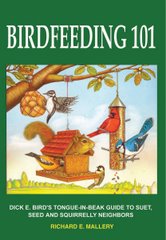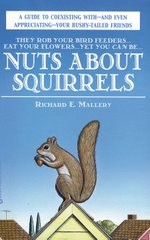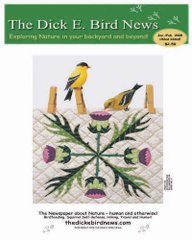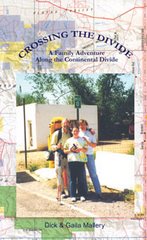bird feeding
Holding her 5-year-old daughter, Jessica, in her arms, Joanna Mungai watched from the deck of her house as American goldfinches nibbled at seeds in a tubular feeder.
At least five of the dainty, bright yellow birds pecked repeatedly at the feeder, flying away for a time only to return for a second helping of medium sunflower chips.
No, not the salty variety humans might devour but the natural seeds marketed for avian tastes.
"They really, really like it," Mrs. Mungai said.
It was as if they could not get enough of a good thing
Also on the menu this sunny but breezy April day were black oil sunflower seeds, trailing at second place; white millet, which got a so-so reception; and cracked corn, which seemed to offer little, if any, appeal.
Mrs. Mungai is no casual bird feeder or watcher, however. She is one of about 120 citizen scientists participating in Project Wildbird, the first nationwide scientific study to determine what types of feed and feeders birds prefer. Participants from coast to coast and in Canada are involved or being sought.
Mrs. Mungai is the only Western Pennsylvania participant, said David J. Horn, assistant professor of biology at Milliken University. He, with student help, is coordinating the project. Ideally, though, the study would have 20 more citizen scientists in Western Pennsylvania, he said.
He hopes to have 500 participants nationwide by summer’s end.
Mrs. Mungai began participating in March after reading about the project in a newspaper. She wanted to teach her daughters, Jessica and McKenzie, 8, about wildlife and to respect nature in their own back yard.
The Mungais’ property includes a pond where wild duck and geese congregate. Project Wildbird offered a great opportunity for teaching the Mungai children about their resident wildlife.
Through the project, citizen scientists, as Dr. Horn calls them, test 10 types of feed, or those most commonly found in bird seed mixes, and four types of feeders. Participants also receive shepherd’s hooks or poles for hanging the feeders and four squirrel baffles to prevent them from eating the feed.
"We watch the birds for 45 minutes and record the birds at five-minute intervals. An unexpected benefit is [Jessica] is learning to tell time," Mrs. Mungai said.
It’s also nice to sit and enjoy the birds, she said. Since they began, besides the goldfinches, the Mungais have seen purple finches, red-winged black birds, rose breasted grossbeaks, northern flickers, grackles, juncos, mourning doves, downy woodpeckers, house sparrows and black cap chickadees.
"What I’ve noticed is a lot of birds come at different times of the day," she said.
A birdwatcher and feeder before she enrolled in the study, Mrs. Mungai said she knew some of the birds already. What she doesn’t know, she identifies through photographs in a National Audubon Society book.
Subscribe to:
Post Comments (Atom)






No comments:
Post a Comment